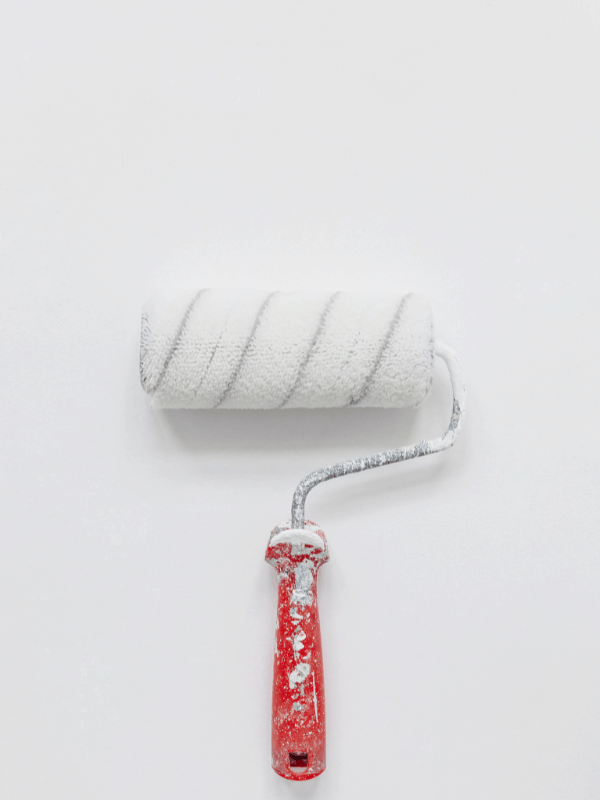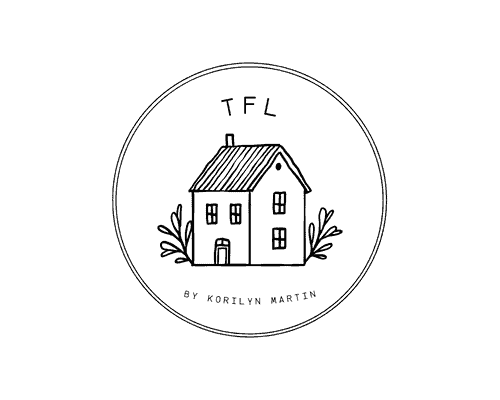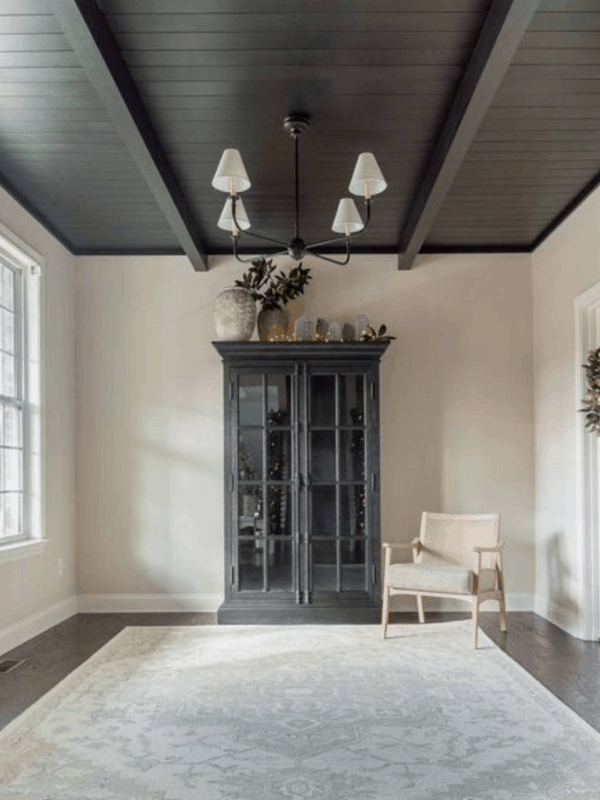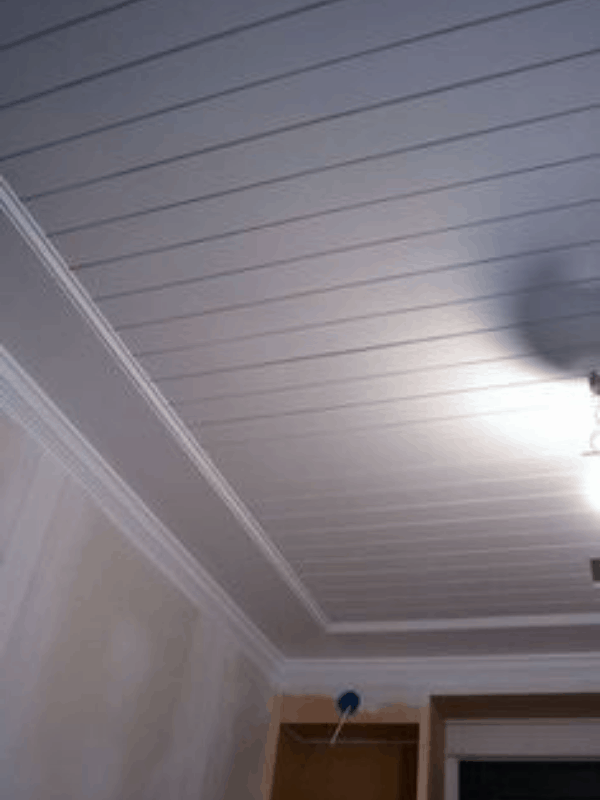How to choose the right white ceiling paint and 22 things you should know before painting
What To Know About Painting Your Ceiling
Painting your ceiling can be an easy task when you have the right tools, paints, tips, and tricks! It can be difficult to know where to begin or knowing what color white to paint your celiling. I’ve compiled a list of frequently asked questions on painting a ceiling, so this blog can be your one-stop shop for what to know before you get started!

What are the best colors for ceilings?
The very first thing to decide if you want to paint your ceiling is its color. This is your chance to add a pop of color to your home or use it to compliment your interior design. If you want to add some color, it is recommended to use a primary color. Red, blue, or yellow are easier to build off of and compliment. A red or yellow ceiling is eye-catching and can be paired easily with neutral colors. Light blue can open up a room, and echo the feeling of a blue sky.
If you do not want a colorful ceiling, you can go for a neutral color. A dark brown ceiling can give a cozier feeling, or an off-white ceiling can give a warmer tone to the warm. The most popular color for ceilings though is white. White ceilings open up a room and don’t catch someone’s eye so that a different focal point of the room can capture people’s attention.
What’s the best white paint color for ceilings?
If you’re wondering what color white to paint your ceiling… then your not alone. White is the most popular ceiling color, and there are many products that accommodate for quality paint coverage.
Ceiling paint usually has a very flat finish because ceilings make little details very noticeable. If the paint has the slightest bit of sheen or gloss, each blemish shows up.
Some of the best ceiling paints I’ve found are from Benjamin Moore. Benjamin Moore’s Chantilly Lace is a crisp bright white with no prominent undertones, and Benjamin Moore’s Decorator’s white is a bright white with some cool gray undertones that soften it.
Should I paint ceilings white or the same color as the walls?
It is more common for ceilings to be painted a different color from the ceilings. The ceiling tends to be shadowed in the home, making the color appear darker.
If the color of the ceiling is the same as the walls, it may appear darker and make the room feel smaller. A white ceiling also gives you more freedom for different wall colors throughout the house.
How many coats of paint does a ceiling need?
It is commonly said that a ceiling only needs one coat of paint. Ceiling paint is designed to have more coverage, though one coat of paint could lead to it looking splotchy or it could have roller marks. With the right method, two coats of paint will be sufficient for a solid look!

Should I paint the ceiling or walls first?
A rule of thumb for painting is to always work from the top down. This also includes starting at the ceiling! This will help you work more diligently and quickly on the ceiling. Once you have your ceiling done, you can move to the open areas on the walls and then finally the trim.
Do white ceilings make a room look bigger?
You may have heard to use lighter colors in a smaller space. This is because lighter colors like white can trick the eye into thinking that a space is bigger.
White reflects light and the other colors in the room. This can be especially helpful if a room has low ceilings, as a white ceiling can lighten a potentially cramped feeling. Conversely, darker colors can do the opposite. If there is a big room, darker colors like dark brown could make it feel cozier than before and more personal.
What is the difference between ceiling paint and wall paint?
A flat ceiling is more prone to pointing out imperfections. Ceiling paint is manufactured specifically to cater to this.

The paint is flat and has the least amount of sheen so that light does not reflect and enhance any blemishes.
Wall paint is more durable so that it can be cleaned easily, while ceiling paint is more viscous to prevent drippiness. Ceiling paint is designed for full coverage and aesthetics.
Is there a difference between ceiling paint and trim paint?
Just as there is a difference between ceiling and wall paint, trim paint is different from ceiling paint. The trim is usually painted the same color as the ceiling, but the trim needs to be easily cleaned like the walls.
This means that the trims paint has to be more durable, and allows the trim to have a sheen finish if that’s the kind of style you want!
When painting a ceiling where do you start?
The rule is usually to paint from the top down, but there are a few steps to take before you reach that point. Before you start painting, cover the floor and tape the edges of trim and corners that you don’t want to get paint on. Remove any furniture that is at risk for paint damage, or that would be in the way of a quality paint job.
Once the area is set, grab a brush and start ‘cutting in’. Cutting in is the detailing before painting the open space of the wall. Cutting in helps make sure you have clean edges with your paint color and is not possible with rolling.

Do you cut in before or after rolling?
It is almost always best to cut in before you start rolling. When you cut in, you can paint a few inches above the edge or corner. This will give you some wiggle room for when you start rolling on the wall. Cutting in first can be done quickly, and make your painting job have a clean look.
When painting can you cut in one day and paint the next?
Yes, you can cut in one day, let it dry, and paint the rest the next day. The main reason that this may cause a problem is in leaving brush marks behind.
Brush marks are easy to fix when the paint is wet, but there is a simple solution if you wish to split up the job between days. Be diligent in cutting in, and make sure that the strokes are even and smooth. This will make it easily blend into the rest of the paint job.
Which direction should you roll on a ceiling?
There is no one direction you can paint a ceiling, but there are a few practices that can improve its look. The biggest tip is to roll towards the primary source of light.
Rolling perpendicular to the light source will make the light show the shadows of the brush strokes. If you are parallel to the light, it disguises the brush strokes. This is less necessary, however, if you have a textured ceiling.

Do painters clean walls before painting?
Yes, professional painters clean walls before painting. Walls collect dust and can have blemishes that would get mixed in with the paint. Painters clean the walls off so that they have a clean slate and can ensure solid paint coverage.
What happens if you dont wash walls or ceilings before painting?
If you do not clean the surface before painting, the finished product may not be ideal. The surface you want to paint may be dirty, glossy, or chipping, which is not a good base for paint. If these imperfections do not show up immediately after painting, they will appear eventually.
Should you tape walls when painting the ceiling?
Yes, to keep clean edges it is best to tape edges and corners of the ceiling before painting. This can help with cutting in. It is best to stay away from 1-inch tape because it isn’t wide
enough to stop the roller from touching the wall. Professional painters use blue painter’s taper Frog to get the job done.
Do professional painters fill nail holes?
Yes, professional painters want the finished wall to look brand new. This means filling in nail holes and smoothing them over before painting the area.
What is the best Sherwin Williams ceiling paint?
The best Sherwin Williams paint I found is ProMar Ceiling Paint. The paint is quality while having all the qualities you need in ceiling paint. It is also good if you are on a budget! People also love alabaster white when choosing what color white paint to paint their ceilings.
Is it better to paint a ceiling with a brush or roller?
The best way to paint a ceiling is to have a mix between brushes and rollers. A brush is perfect for cutting in. It lets you be more precise on edges. For filling in big areas, a wide roller is more efficient and gives more coverage. A medium pile roller with a telescopic roller pile makes it easier to paint!

Will roller marks go away when the paint dries?
While painting, you will most likely see streaks and brush marks. These marks will dry with the paint, and will unfortunately still be visible. To avoid roller marks and paint streaks, you have to use some methods that even out the paint, and work out the streaks before the paint dries.
Why does my ceiling look patchy after painting?
There may be a few reasons that your painting looks patchy after it dries. This could be because of the coats and uneven streaks. If you put too much paint on one coat, the paint can settle in spots and make it look patchy. On the other hand, if you didn’t put enough paint on and only used one coat, It may not even out correctly.
The conditions in which you painted in could cause patchiness too. If you painted in poor lighting, it may look good to you at the time, but when the sun shined into the room, it could show that it dried to be patchy.
How do you prevent roller marks when painting a ceiling?
There are a few methods you can use to avoid patchiness or roller marks. First, make sure that your paint is flat and has the least amount of sheen. This will make sure some imperfections are more easily hidden. To avoid using too much paint, put less paint on your roller.
You can always go over it again with another coat, but a lighter amount of paint on the roller will prevent the paint from gathering and looking patchy.
You can also paint your brush strokes in a different direction on the second coat. The second coat will ensure full coverage, and the brush strokes in a different direction will prevent the lines from gathering and drying in a nonaesthetic way.
You could also choose to not use brushes or rollers at all. Spraying your ceiling is the best way for solid paint coverage. It provides an even look and completely avoids roller marks.
What is the best roller to use when painting a ceiling?
The best roller to use when painting a ceiling is one with a telescopic handle. A thicker roller nap can also help avoid roller marks. It will speed up the process and has rounded edges so it is easier to work around corners.
Is it better to roll or spray a ceiling?
Spraying a ceiling may seem like the obvious choice. It gives an even coat, avoids roller marks, and is quicker than rolling!
Though the first time using a sprayer can be difficult, and it takes many tries to get the result you dream for. Sometimes the time you save using the sprayer is spent fixing some of the mistakes made by the sprayer.
Rolling tends to be accessible for most people, and people tend to be more experienced with the painting method. Spraying versus rolling all depends on your skill level, budget, and time.
How hard is it to paint a ceiling?
Painting a ceiling requires some research, preparations, and some practice but it isn’t as difficult as this article may make it look. It requires more time and dedication than it does at a high skill level. Once you’ve got your supplies and an idea of what you are doing, you are all set to go!
Be sure to pin to reference later!

Thanks so much for reading along!
Much love,
Kori ~ From The Farmhouse Life




Looks like a typo: “It is more common for ceilings to be painted a different color from the ceilings”. Good read, thanks for the information!
I love this sentence in this article:
It is more common for ceilings to be painted a different color from the ceilings.